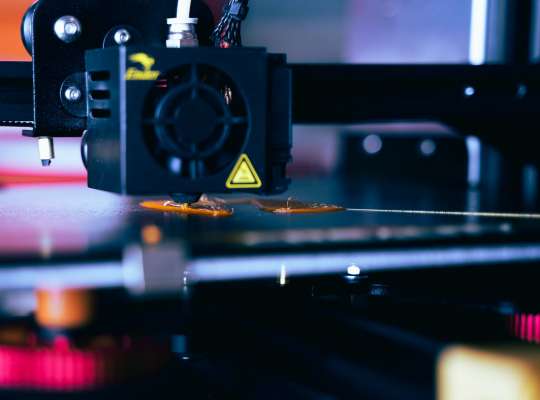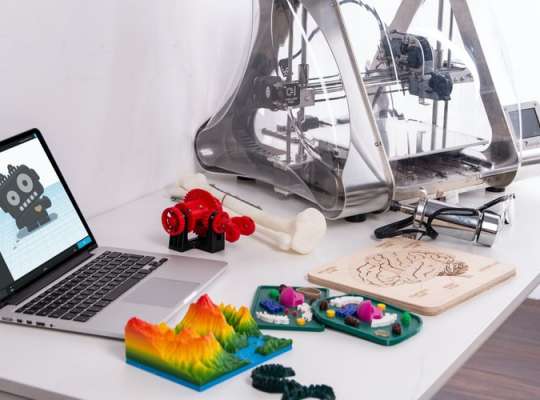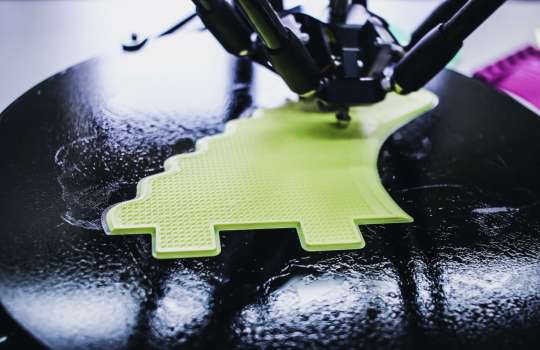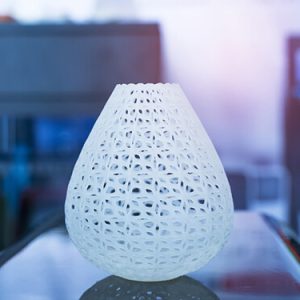Fused Deposition Modelling (FDM)
Services Across Australia
Trusted partnerships, unrivaled results CAD Deziner’s track record























How does FDM 3d Printing work?
- Computer Aided Design Files are required in .STL format.
- Material is fed into the extruding. The thermoplastic material comes in the form of a spool.
- The cold end of the printer pulls the material from the spool and pushes it into the hot end, which consists of an extrusion head and a nozzle.
- They are further connected by a computer which controls the x, y, and z axis during the printing of the part.
- The material is collected layer by layer, and it cools down and solidifies.
- When one layer is deposited by the extrusion head, it is pushed down to the build platform, and a new layer is formed. This process is repeated until the part is completed.
Some other benefits include:
- Cost-effectiveness
- Lesser lead times
- Used for a wide range of prototyping products

Benefits of FDM 3d Printing
COST EFFECTIVENESS– Fused Deposition Modeling is widely used for prototyping because it is highly cost effective. You don’t need to pay much yet to get a lot. The price that we charge for FDM 3D printing is extremely reasonable. In fact, we provide one of the cheapest FDM 3D printing services in terms of price.
Lesser Lead Times- If you are in a hurry and want your model to be printed in no time, then there is no better option than Fused Deposition Modeling. You can contact us, and we will print anything for you within a given time.
Prototyping Products- FDM 3D printing is the best way to test your concept by printing their prototypes. FDM requires less cost and less time, plus their material is also cheap. Hence, you can print multiple prototypes and compare them to find the right one. In this way, you will be able to improve your overall design and concept.
Availability of material- FDM 3D printing technology uses polymers for printing prototypes. At our workspace, we have a wide range of materials suitable for your prototype. We more than 18 different material options using FDM Process.

Many industrial professionals used FDM 3D printers to test their models. Medical professionals and engineers print prototypes of their concept models before going for mass products.
This allows industries to test early concepts. You can FDM print multiple designs and concepts to check which fits the most. In this way, FDM printing saves a lot of money and time.
People also use FDM printers for medium fidelity prototyping. Medium fidelity prototypes are 3D printed objects that look almost like the actual parts. The resolution used for Medium Fidelity Prototyping is 0.1 mm layers. If you want to feel and check the performance of your prototype, then this option is ideal for you.

We can 3D print using FDM technology almost anything. It doesn’t matter how big your model is, bring your concept to us, and we will print it for you. Also, the complexity of the object doesn’t matter. Our employees are expert enough to bring any concept into reality. On average, our printers can print 120 mm x 120 mm x 200 mm to 350 mm x 250 mm x 250mm.

Fused Deposition Modeling (FDM) OR Fused Filament Fabrication:
FDM 3D Printing is the most widely used additive manufacturing process which involves the fusion of layers of materials together to create a part. FDM 3D printing employs thermoplastic material as a filament to produce the best quality and strong parts with the help of a CAD model. The material is fed into the heated 3D printer end, thereby melting it and creating a structure by depositing the layers of the material. FDM 3D Printing is the most used process for fabricating industry grade parts. This technique is fairly simple and widely accepted.
The Biggest advantage of FDM printing is scalability and material flexibility. FDM can provide high finish standards after various post-processing methods such as polishing, painting, and cold welding. Our printing services provide shorter lead times and economic costs.
3D printing has proved to be a revolutionary tool for dentistry. Experts use all the required materials and tools to produce multitude of things. These include orthodontic models, precise crown and bridge models, castable or pressable restorations, retainers, and aligners. Moreover, they are now also using 3D printing for the production of biocompatible dental objects like dentures and splints.
Construction Industry: This happens to be one of the industries, especially in Australia, that is making great usage of 3D printing. The process is leveraged to print the models of entire buildings; these 3D models of the whole structure provide great help to builders to make the desired building. Along with this, the tools also help in the creation of construction machinery. 3D printing in construction has allowed for faster and more accurate construction of bespoke projects. Moreover, it has also significantly lowered the labour costs and cut down on wastage.

FDM 3D Printing Materials – Specifications Overview
| Material Name | Surface Texture | Minimum Feature Size | Minimum Wall Thickness | Maximum Build Volume (mm) |
| PLA(FDM) | Slightly rough | 1.0mm | 1.0mm | 300x300x450 |
| ABS-M30i | Slightly rough | 1.0mm | 1.0mm | 900x600x900mm |
| ASA | Slightly rough | 1.0mm | 1.0mm | 900x600x900mm |
| PC-ISO | Slightly rough | 1.0mm | 1.0mm | 900x600x900mm |
| PC-ABS | Slightly rough | 1.0mm | 1.0mm | 900x600x900mm |
| NYLON 6 | Slightly rough | 1.0mm | 1.0mm | 900x600x900mm |
| NYLON 12 | Slightly rough | 1.0mm | 1.0mm | 900x600x900mm |
| NYLON 12CF | Slightly rough | 1.0mm | 1.0mm | 900x600x900mm |
| Vero pure white | Ultra smooth surface | 0.7mm | 1mm | 490x390x200mm |
| Vero Black Plus | Ultra smooth surface | 0.7mm | 1mm | 490x390x200mm |
| MED-610 | Ultra smooth surface | 0.7mm | 1mm | 490x390x200mm |
| ASA(UV resistant) | Slightly Rough | 1.0mm | 1.0mm | 914mm X 609mm X 914 mm |
| ULTEM 9085 | Slightly Rough | 1.0mm | 1.0mm | 914mm X 609mm X 914 mm |
| ULTEM 1010(FDM) | Slightly Rough | 1.0mm | 1.0mm | 914mm X 609mm X 914 mm |














